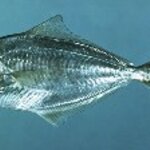Environment

Reading The Cryosphere
A picture is worth a thousand words - but only if you can speak the language.
When examining satellite images of the cryosphere it helps to know something of the mechanisms which can create the effects seen. The skills needed in interpreting these images can be developed by looking at Google Earth or Wikimapia images without any annotations. Check the history of an area and then go relic hunting. Alternatively, look at some satellite images, find something odd and then try to guess what it is. In general, form follows function. For example…

Coastal areas and inland water bodies , salt marshes have their own flora and fauna. High tides and low tides have their role to play. During monsoon season rain water allows the growth of certain halophytes as their seeds require non saline water for their germination while they need saline water for their growth. Salicornia is one such plant. Rhizophora with its special pneumatophores meant for gaseous exchange is another plant of coastal marshes. Different algal material also grows in the coastal waters depending on the ocean Once the plants are there the sea animals get their food and a…

Happy holi is celebrated across India . In the evening of purnima holika (made from wood logs ) symbolizing evil is burnt and prahlad (made of green twig) is taken out from the burning Holika just in time . The message was the victory of good over evil.
Saving Prahlad a green tree twig indicates protecting green trees and burning the old logs . This used to be one function for the city or mohalla or area . Nowadays Holi is burnt in every corner of the city roads. Jawaharnagar sector 1 and 2 have taken a decision to burn Holi together . This will save wood logs and promote unity and brother…

Sea beaches and their vegetation have disappeared as most of beaches are encroached upon for hotels industry, housing , and industries in India . Mangroves and sunder bans have also being lost to the natural calamities or manmade calamities.
Unless we preserve the sea beaches and conserve the natural vegetation and refrain from destroying vegetations more catastrophes are going to come. It does not need astrology to forecast the same : its human activities which are writing their own future

40 percent of world’s population lives in coastal areas. Coastal areas have different characteristics where saline water from sea, its winds carrying salt, salt marshes, inland sea water vegetation , halophytes make a typical ecosystem
Man is not master of earth.
Man destroys ecosystem and builds buildings, atomic power plants, uproots the vegetation and makes concrete jungles. It’s not sea which has invaded human dwellings its man which has gone too deep into sea.
Mangrove vegetation is typical and must be restored.
Time is running. Let us keep ecosystems intact and if we destroy them and…

Vegetation line along rail road or connecting roads was such a common site that sometime trees would even obstruct the passage, in my childhood. They widened the roads and cut the trees . Jaipur -Ajmer Highway for that matter is good example where trees as old as several hundred years were cut and roads were widened. Despite of promise of raising more trees the roads are still open. Trees now raised in inhospitable soil suffer termite attack. Plants can’t be grown at will or on any site you chose. They are specific in their choice of soil, water, and even their society. Strangely enough…

This is a butterfish:
NOAA describes it unflatteringly as a "small, bony foodfish." Butterfish live along the Atlantic coast of North America from Florida to Newfoundland, and they've been fished commercially for some time, with predictable results:
These days, not many people make a living off butterfish. As you can see from the incredibly low landings (which have not increased since 2005), it just doesn't make economic sense. But butterfish are still being caught and killed, as a side effect of a different fishery--the Atlantic longfin squid.
These are longfin squid:
People started…

Floods in a country,or several countries, rapid Tsunamis around the world (taking place at a faster rate), temperatures rising - do they not provide enough proof that climate change is taking place. Though as per strict definition a climate change must be permanent alteration of environmental conditions of a place or continent. Are these changes permanent ? NO. But every thing is changing from bad to worst. Is is not a climate change ?
Carbon emissions apart if you look around your house: the forest is destroyed to make more houses forests are destroyed to make more electricity, more…

Whichever way you argue one thing is sure - the population is increasing and earth resources water, land, air and atmosphere are finite. They are subjected to manmade activities of deforestation, loss of earth crust and drying of water bodies.
Rivers are turned into drains, ponds have dried up globally, and lakes are matter of past and vegetation is getting extinct. Human being is part of the earth. One may not win argument on global warming, climate change but what is obvious is human suffering due to imbalanced growth over exploitation and wanton destruction of vegetation due to human…

One feels very sad to see the devastation in Japan and offer deep condolances to the departed sousl and wish all courage to the people there who are fighting the natural calamity.
Tsunamia are a most horrific condition that can happen to any nation or a region. However, while analysing the cause and effect of tsunamis that occurred in the Andaman and Nicobar regions a commentator remarked that the mangrove vegetation of the local region, where kept intact, could check up to 90 percent effect of tsunamis.
Coastal areas up to 10 km have their own vegetation and such areas do not tolerate man-…